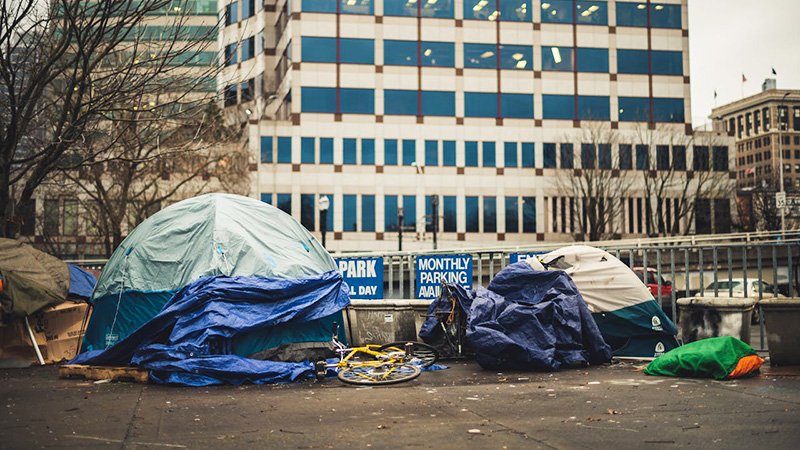One major consequence of the housing crisis is increased rates of homelessness. Real estate development and design experts in Tennessee are responding by designing multiunit housing prototypes that blend in with existing neighborhoods.
Read MoreCriminalizing homelessness is often an attempt to make public spaces safe and comfortable. It fails miserably, at the cost of persecuting some of the most vulnerable members of the population. If cities want a real, sustainable solution to a homelessness crisis, they need to address the underlying cause: North America’s broken housing system.
Read MoreIt can be difficult to find a free public restroom. Here’s how one city in Alberta is tackling the problem, through small, immediately effective solutions.
Read MoreCities wanting to win at the infinite game must take public safety seriously.
Read MoreA recent advertising insert in the Winnipeg Free Press would have us believe that road expansion will solve not only homelessness, but crime and addiction, as well. Let's investigate these lofty claims.
Read MoreAlthough you may not see as many people without homes in the streets of rural America, that doesn’t mean the housing crisis hasn’t struck communities outside of big cities.
Read MoreThis public toilet in Winnipeg, MB, is a case study in why city governments need to pay attention to the power of small bets.
Read MoreBeth Silverman is working on a non-traditional—and very successful—approach to housing affordability.
Read MoreAcross the country, the property tax system is causing economic hardship for homeowners—and it’s because the system itself is flawed.
Read MoreL.A. is facing an increasing problem with homelessness. Can it learn something from the efforts of another large Sunbelt city?
Read MoreSmall-scale developer Johnny Sanphillippo shares tales of Californians employing simple, low-cost, high-yield measures to get by amidst the housing crisis.
Read MoreRabbi Donna Berman leads a community center serving neighbors in Hartford, CT.
Read MoreWhat would an incremental, fiscally responsible and local approach to solving homelessness look like?
Read MoreThe City of Philadelphia is pursuing expensive new construction while neglecting basic maintenance on hundreds of houses that could become homes for low-income residents. Now, residents are taking matters into their own hands.
Read MoreWhat would it actually cost to put a roof over the head of every person experiencing chronic homelessness? Some number crunching suggests not as much as you think, and an amount we could afford—especially given what it already costs not to.
Read MoreInnovative models from around the country address homelessness by starting with small, inexpensive, and imperfect solutions. What can Akron, Ohio learn from these examples?
Read MoreThe physical design of the modern public realm, with its emphasis on speedy efficiency, advances a dehumanizing tendency. It undermines the opportunity to be a neighbor.
Read MoreIn 2015, Utah made major headlines for “solving homelessness.” What does that look like today and can this model be applied elsewhere?
Read MoreIn Washington, DC, a former trolley line lies neglected by the transit system that owns it, the park service whose land surrounds it, a major Catholic university that abuts it, and the city it runs through.
Read MoreThe deck is stacked against suburban residents trying to make it out of poverty and the current network of nonprofit and government-based service agencies is not set up to help them.
Read More



















